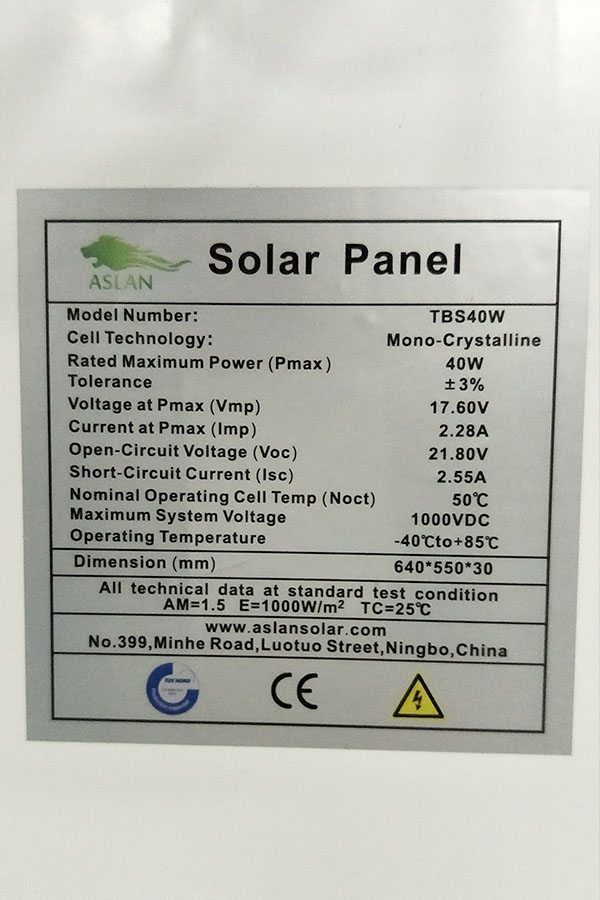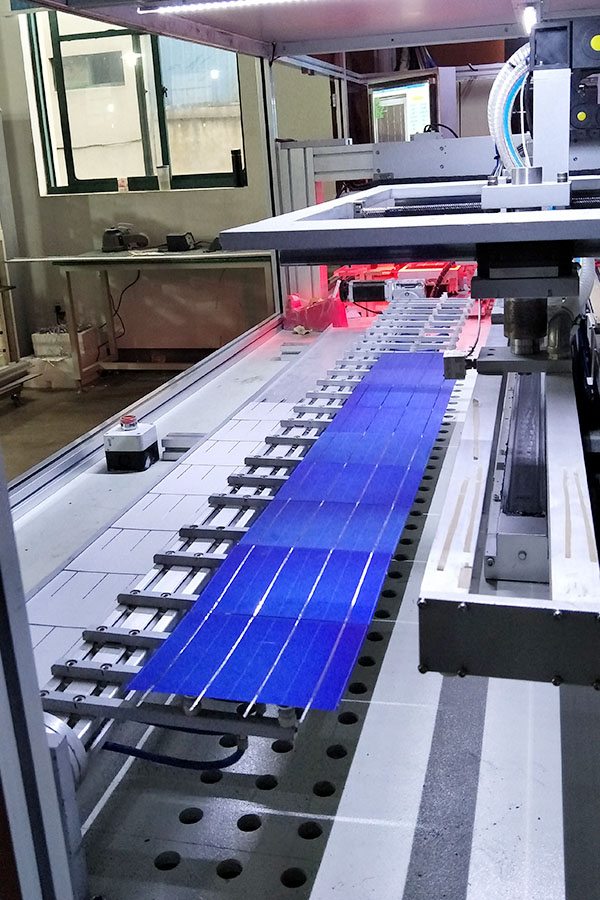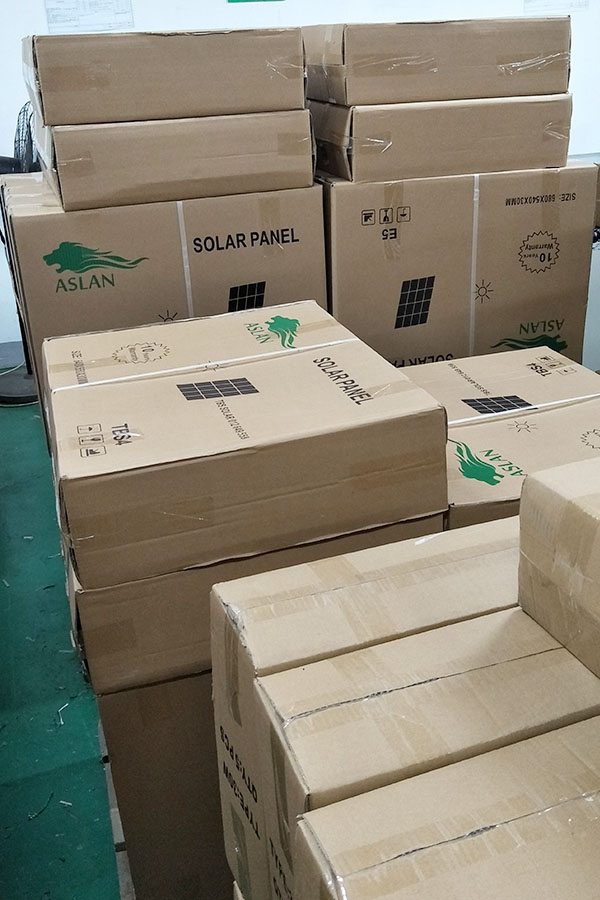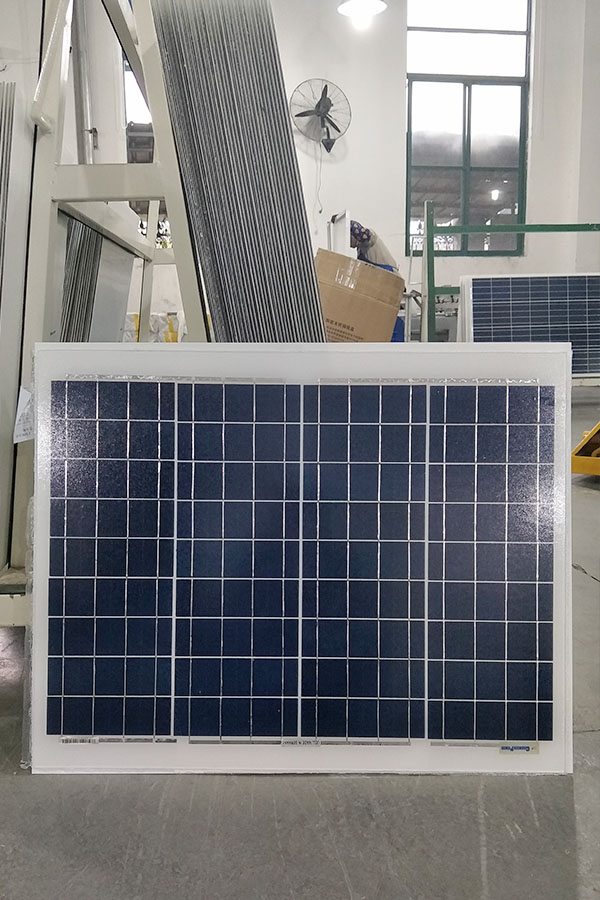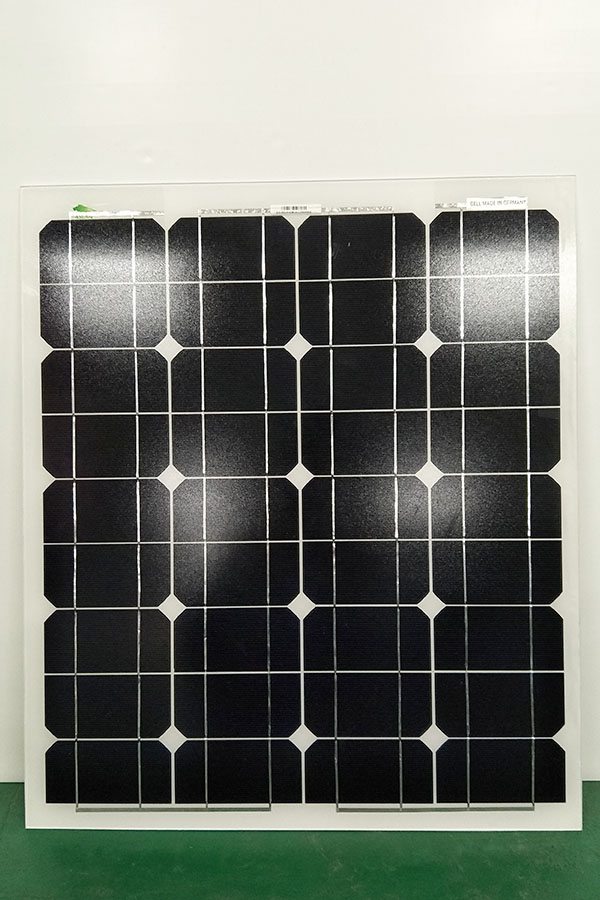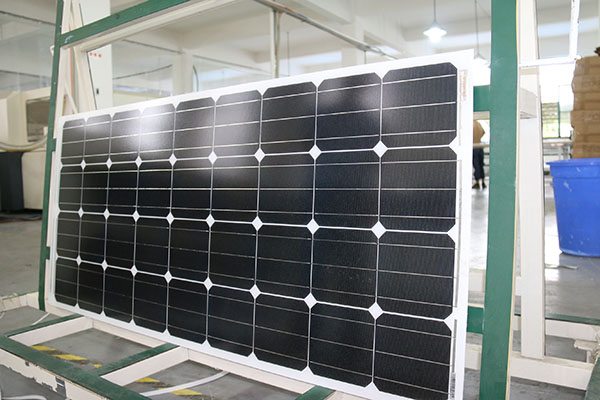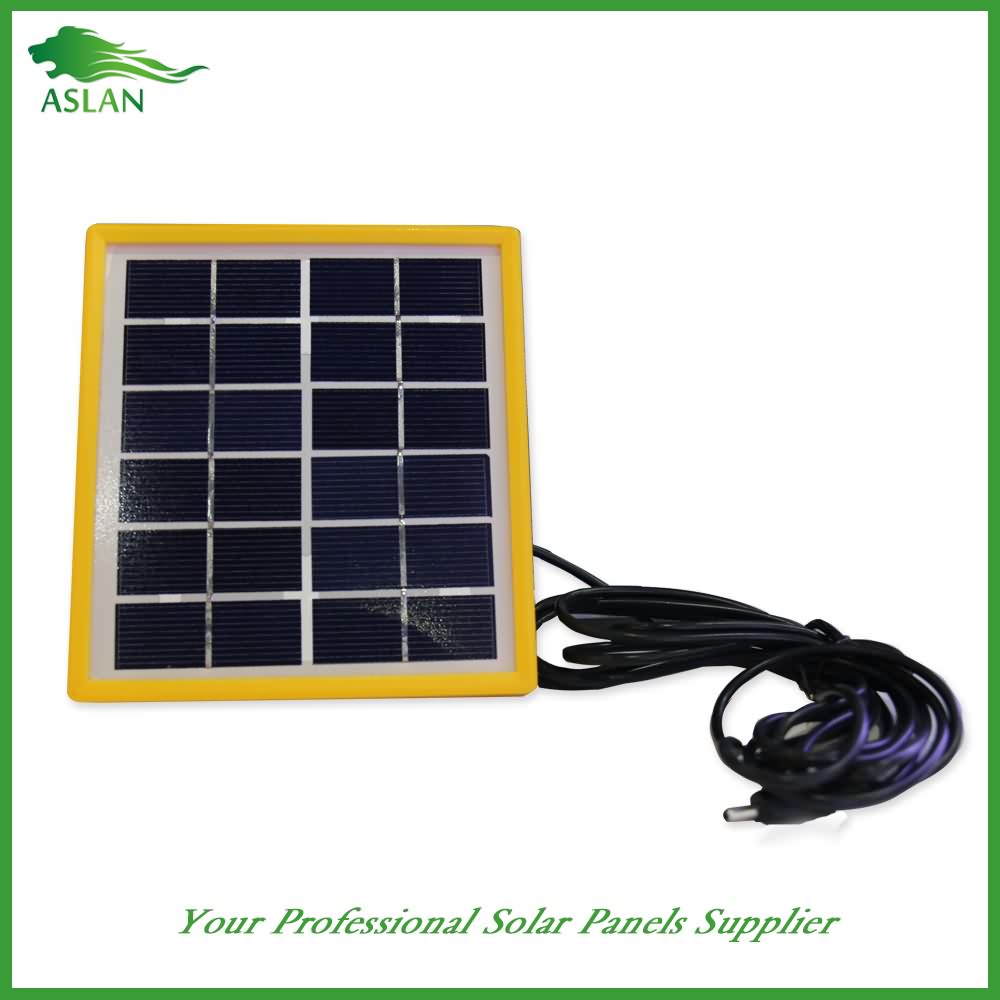20 Years manufacturer Poly-crystalline Solar Panel 90W for Bangkok Factories
Short Description:
We depend on sturdy technical force and continually create sophisticated technologies to meet the demand of 20 Years manufacturer Poly-crystalline Solar Panel 90W for Bangkok Factories, Sincerely hope we are growing up together with our customers all over the world.
Poly-crystalline Solar Panel 90W
Technical parameter
Maximum Power(W) 90W
Optimum Power Voltage(Vmp) 18.33V
Optimum Operating Current(Imp) 4.91A
Open Circuit Voltage(Voc) 21.96V
Short Circuit Current(Isc) 4.89A
Mechanical Characteristics
Cell Type Poly-crystalline 156x104mm (6 inch)
No of Cell 36 (4x9pcs)
Dimensions 1008x678x35mm
Weight 8.0KGS
Front Glass 3.2mm,High Transmission, Low Iron,Tempered Glass
Junction box IP65 Rated
Output Cable TUV 1×4.0mm2/UL12AWG,Length:900mm
Temperature and Coefficients
Operating Temperature(°C): -40°C ~ + 85°C
Maximum System Voltage: 600V(UL)/1000V(IEC) DC
Maximum Rated Current Series: 15A
Temperature Coefficients of Pmax: -0.435%
Temperature Coefficients of Voc: -0.35%
Temperature Coefficients of Isc: 0.043%
Nominal Operationg Cell Temperature (NOCT): 47+/-2°C
Materials of solar panel
1).Solar Cell——Poly-crystalline solar cell 156*104mm
2).Front Glass——-3.2mm, high transmission, low iron, tempered glass
3).EVA——-excellent anti-aging EVA
4).TPT——-TPT hot seal made of flame resistance
5).Frame——anodized aluminum profile
6).Junction Box——-IP65 rated, high quality, with diode protection
Superiority: high quality anodized aluminum frame, high efficiency long life, easy installation, strong wind resistance, strong hail resistance.
Features
1. High cell efficiency with quality silicon materials for long term output stability
2. Strictly quality control ensure the stability and reliability, totally 23 QC procedures
3. High transmittance low iron tempered glass with enhanced stiffness and impact resistance
4. Both Poly-crystalline and Mono-crystalline
5. Excellent performance in harsh weather
6. Outstanding electrical performance under high temperature and low irradiance
Quality assurance testing
Thermal cycling test
Thermal shock test
Thermal/Freezing and high humidity cycling test
Electrical isolation test
Hail impact test
Mechanical, wind and twist loading test
Salt mist test
Light and water-exposure test
Moist carbon dioxide/sulphur dioxide
More on http://solarpv.tv/ – HyperMedia Business Platform
During SNEC 2017 in Shanghai we spoke on Solar Leaders TV Stage with an expected guest, Pranav R. Mehta, Chairman of NSEFI (National Solar Energy Federation of India), Co-Chairman of Global Solar Council & Vice-Chairman of Asian Photovoltaic Industry Association (APVIA).
India and China seem to be amongst the nations that aim at leading the world’s transition towards the solar future and it was interesting to learn from Pranav, if the countries are focused on “the fight” between each other or rather working “hand in hand” in order to reach their goals.
READ HERE: I’ve made a video previously with just drawings about this, but here is a quick model of that.
Each array system has it’s good and bad points. It helps in any mirror array system if the focus is direclty inline or as close as possible with the Sun (as commonly used with the parabola/dish type systems). It will then be more efficient at using the sunlight and it will collect more energy. This system shown in the video is perhaps the cheapest and simplest to make. If it is not so efficient at gathering enough energy at certain times/angles, then more collector (mirrors) surface area will be needed….so design it for maby 1.5 times larger than needed….for example, instead of a 1,000W system (a square meter total area), design it for a 1,500W (a square and a half meter total area) system.
The mirror shown in the video is about 3.5 inches on each side. I think 3 to 4 inches is good (for heating a single pot or pan, however more than that may be needed for a large solar oven for baking), and any more than that, then the system starts to get too large if the same number of mirrors are to be used. This is a recycled mirror, about 3/32 inch thick (about 2.4 mm), from a bathroom “medicine” cabinet mirror. I have a video up about basic glass cutting.
The white base part below the mirror, as seen in the video, is just a segment of a pvc pipe (1.25 inch inside diameter). It’s cut at 90 degrees relative to the sides of the pipe, however a small cut near the edge of the semi-sphere will allow the mirror to be tilted some more degrees. A level cut (not the “flat” 90 degrees) can also be used at the base of the pipe for setting mirror angles.
I guess its good “match” the semi-sphere and cylinder. You want the mirror to tilt as much as possible, however thats when the semi-sphere is sitting minimally on the cylinder. There is more support when the semi-sphere is glued in deeper; maby try for maby 1/4 of the sphere diameter.
The plaster semi-sphere has a diameter of about 1.5 inches. I got the plaster from the local hardware store ( i think it says it has some binder/glue in the mix too, but I think “dental plaster” is much harder – probably as hard as baked clay/brick before the glass/ceramic stage) Allow it to dry completely. It will be a grey color when wet/damp, and then will turn white when dry. When dry, you can put a thin coating of glue or something like epoxy on it to prevent it from absorbing excessive moisture, and to add a bit of strength to it.
This system I have in mind here is not a traditional heliostat with motor steering, but one of manual/hand steering. This is for simplicity and cost.
I’m thinking of a focus of concentrated energy at about 8 to 10 feet from the mirrors. The farther the focus is from he mirrors, then the less the mirrors need to be “angled” or adjusted, so maby the semi-sphere idea is not even needed. All this is more or less still on the “drawing board”, so give it a try if you want results now.
When I cut this square mirror from a larger mirror, I tried to just cut and remove that small mirror right out of the larger mirror. This is not recomented I guess now because it has a tendancy to not break where you want it, giving extra or less pieces of glass usually. So then, try to cut/score entirely across the large mirror when cutting, and then work with the smaller mirror/piece to get the square piece.
As mentioned, I put a glue or waterproof epoxy coating on the back of the mirror (after the semi-sphere was glued on) to give a layer of protection to the silver of the mirror. Cloth can also be set into that clue to prevent the mirror from shattering all over if it gets broken. You can also try some regular paint you have laying around on the back of the mirror.


